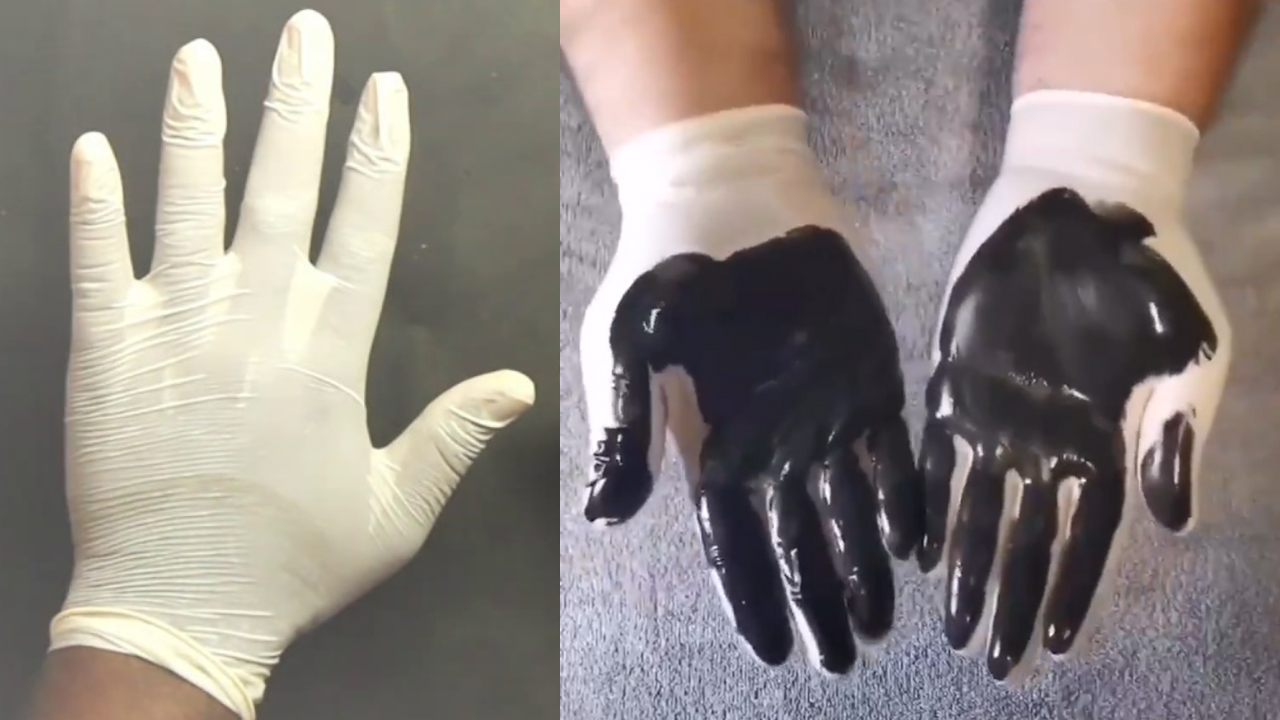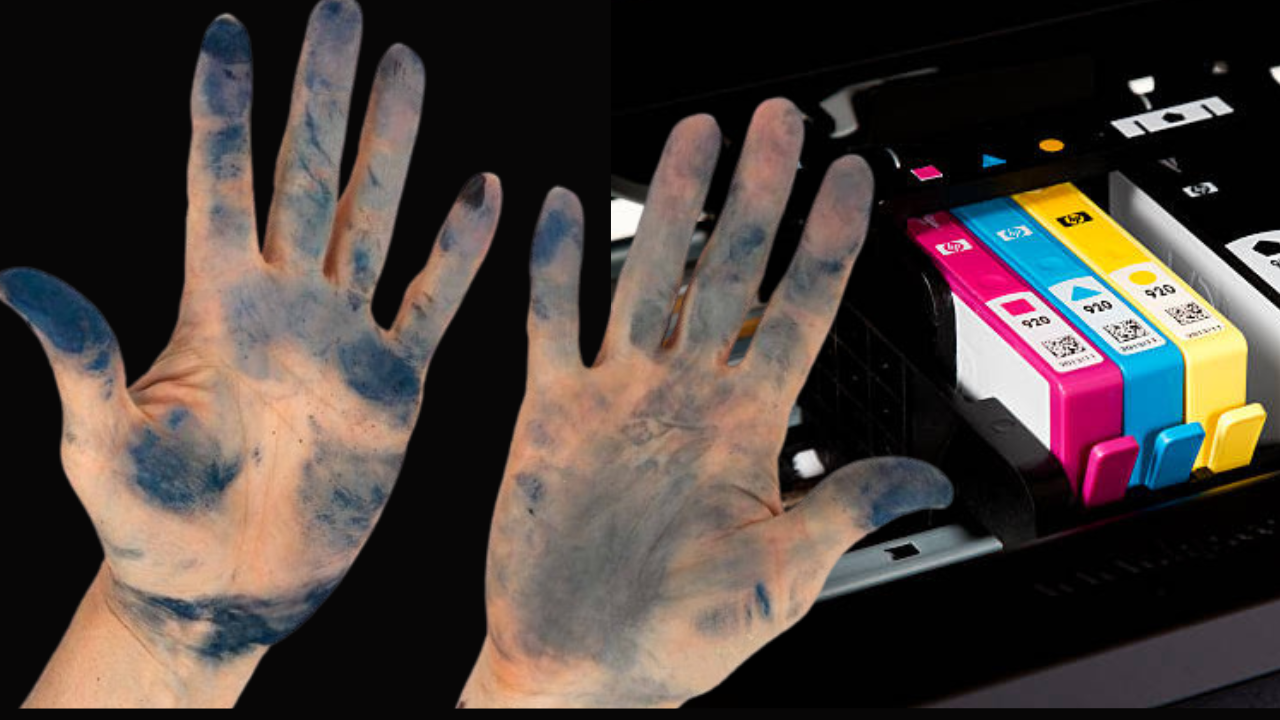Introduction:
Accidents happen, and if you’ve ever found yourself with printer ink on your skin, you know how stubborn it can be to remove. Whether you’re a seasoned professional or the average home user, getting ink on your hands is unfortunate but common. But fear not, this handy guide will help you effectively remove ink from your skin without irritating it.
Guide to remove Ink from your Skin:
1) Act Quickly:
Acting quickly is the key to getting printer ink off your skin. The longer the ink stays on the skin, the more it absorbs, making it harder to remove. As soon as you notice ink, take action.
2) Wash with Soap and Water:
Start by washing your hands with mild soap and lukewarm water. Gently scrub the inked area, allowing the soap to break up the ink particles. Use a soft cloth or sponge to increase friction. Avoid using hot water as it can open your pores and make the ink’s penetration easier.
3) Nail Polish Remover or Rubbing Alcohol:
If soap and water alone don’t help, consider using a mild solvent such as nail polish remover or rubbing alcohol. Apply a small amount to a cotton or soft cloth and pat the ink-spotted skin. Be careful not to rub too hard as this can irritate the skin. Always test a small, inconspicuous area first to ensure it suits your skin.
4) Petroleum Jelly:
Vaseline is another effective way to remove printer ink from the skin. Apply a generous amount of petroleum jelly to the stained area and leave it on for a few minutes. Gently wipe off the ink with a soft cloth. This method is beneficial for those with sensitive skin because it is less harsh than some solvents.
5) Olive Oil:
Olive oil is a natural and gentle alternative to ink removal. Apply a small amount of olive oil to the affected skin and rub it in. Leave the ink on for a few minutes before wiping it off with a soft cloth. This method not only removes the ink but also moisturizes the skin.
7) Baking Soda Paste:
Create a paste by mixing baking soda with water. Apply the paste to the inked area and gently rub it in a circular motion. Baking soda acts as a mild abrasive and helps lift the ink particles from the skin. Rinse the paste with water and dry the skin.
8) Commercial Ink Removers:
If all else fails, consider using an ink remover specially formulated for the skin. These products are designed to be safe and effective. Follow the product instructions carefully to ensure it is suitable for use on your skin.
Is Printer ink Toxic on the Skin?
Inks, which are usually dye or pigment-based, are not very toxic when in contact with the skin but may contain chemicals and pigments that can cause skin irritation or allergic reactions. The toxicity of these inks varies depending on the type and brand used.
Printer ink is often skin-safe, but it is important to read product labels and safety information to avoid skin irritation. If the ink gets on your skin, wash it off with mild soap and water. If irritation persists or you are concerned about the ingredients in the ink, see your doctor. Handle ink cartridges with care and follow the manufacturer’s safety instructions. For information on the toxicity of the ink, see the Material Safety Data Sheet.
How to Avoid Getting Printer Ink on your hands:
Avoiding getting ink on your hands requires careful handling, proper organization of the workspace, and the use of protective measures. Here are some tips to help prevent ink from getting on your hands.

1) Wear Gloves:
Consider wearing disposable or reusable gloves when handling ink cartridges or refilling ink. Nitrile gloves are a good choice because they provide a barrier without causing allergies in most people.
2) Use Protective Clothing:
Wear old or protective clothing, especially when handling large amounts of ink. This can help prevent accidental skin contact.
3) Organize Your Workspace:
Minimize the risk of spillage by creating a clean and organized workspace. Keep the area reserved for ink processing away from other work materials.
4) Read the Instructions:
Follow the manufacturer’s instructions when installing or refilling ink cartridges. This includes some special instructions for handling and avoiding skin contact.
5) Be Mindful When Refilling:
When refilling ink cartridges, do so carefully. Use a steady hand and monitor the ink level to avoid overfilling.
6) Clean the Printer Carefully:
If you need to clean or maintain the printer, turn it off and unplug it first. Follow the manufacturer’s cleaning instructions and be careful with inked parts.
7) Use a Tray or Paper Towels:
Place a tray or absorbent material under the printer or in the area where you are working. This can help collect spills and prevent them from reaching your hands or other surfaces.
8) Wash Hands Promptly:
If you come into contact with ink, wash your hands immediately with mild soap and lukewarm water. The faster you clean the ink, the easier it is to remove.
9) Avoid Touching the Nozzle:
When handling ink cartridges, avoid touching the nozzles or other exposed parts. This helps prevent contamination and minimizes the risk of ink transfer to your hands.
10) Use Tools for Precision:
When servicing or refilling the printer, use the tools provided by the manufacturer for precise and controlled handling of the ink-related parts.
Conclusion:
While getting printer ink on your skin can be a frustrating experience, it’s important to remember that there are several methods to effectively remove it. Working quickly, using common household items, and being gentle on the skin is key to successful ink removal. Experiment with the methods mentioned above to find what works best for you and say goodbye to those pesky ink stains!
Share this content:


1 thought on “How to Remove Printer Ink from Your Skin”